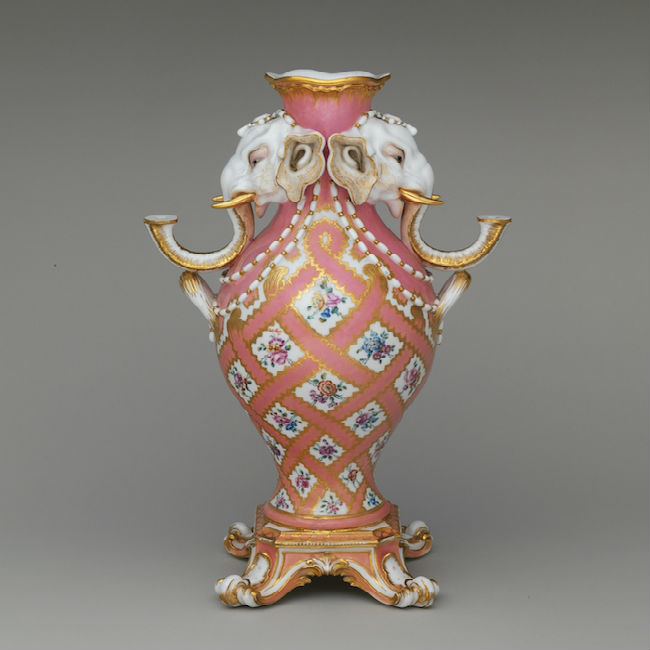If your acquaintances are anything like ours, you experience the occasional vacant stare when you tell them about your love of ceramics. Luke Syson had a similar outlook, until he came around. He detailed his experiences in a TED talk last year.
Above image: Jean-Claude Duplessis (French, ca. 1695–1774, active 1748–74), Elephant-head vase, ca. 1758-62. From the Sèvres Manufactory
Luke Syson joined the Metropolitan Museum of Art in 2012 as the Iris and B. Gerald Cantor Curator in Charge of European Sculpture and Decorative Arts. This year, he co-curated the small but innovative exhibition “Plain or Fancy? Restraint and Exuberance in the Decorative Arts.” Before joining the Met Syson was Curator of Italian Painting before 1500 and Head of Research at the National Gallery, London. While at the National Gallery, he was curator of the exhibition “Renaissance Siena: Art for a City,” and in 2011 he organized the groundbreaking “Leonardo da Vinci: Painter at the Court of Milan.”
Syson was also one of the curators who organized the acclaimed Enlightenment Gallery at The British Museum and was part of the team that planned the new galleries for Medieval and Renaissance Art at the Victoria & Albert Museum.
Syson was a curator of Renaissance art (he describes Leonardo as seeing a map of God’s universe) who later took over the Met’s collection of ceramics. It wasn’t an easy transition. “I thought to myself: what the hell have I done?” he said.
But people can change. He shares his amusing and poetic conversion story with the audience at TED.
Love contemporary ceramic art? Let us know in the comments.

What a very delightful talk – I’d have liked him to go on much longer.
When I first fell in love with pottery and ceramics I was deeply captivated by earthy, crunchy, wabi sabi Japanese teaware, with its almost religious requirements, rules and demands and its particular aesthetic delights. That’s when I first really began to notice clay’s aesthetic potential. Amazing.
There was much sensual beauty in those objects to me, and as my appreciation for that tradition deepened the forms and textures that I admired became ever more extreme, then hyperbolic – pieces carved and crunched and cracked and burnt beyond functionality by contemporary Japanese artists pressing that aesthetic into increasingly defiant, imaginative flights.
Pieces like that wondrous vase (Syson gets it so well), which I immediately love and appreciate today, weren’t even on my radar then – color at all was even suspect – and what’s most interesting in the talk to me is that it so perfectly illuminates the way a personal aesthetic, if its alive, moves and grows. It’s always a matter of realizing in retrospect that one just hadn’t known how to *see*. Syson captures that moment of doubletake, and recognition, and something like rapturous conversion, so well To me, that’s what it’s all about.
Thanks for that video.
Nice to see and hear the evolution of his thinking. I’ve always loved and coveted this form; but for me, it embodied the core fallacy that the 18th century was all about “good taste” while the 19th century was about “bad taste.” These pieces are, to be, about the essential fallacy of the concept of taste in terms of understanding material culture as good or bad.
Of course, I’d want them in the Sevres bleu celeste, rather than pink.
As a maker cursed with the mind of a critic/historian, always feeling the weight of eons of ceramic history when I am in the studio, this talk really resonates with me. I also love the moment in a museum or gallery where my taste or predisposition is overridden by the object itself – I find that I learn more about the real range that the medium can take on in the hands of the artist that way, and break into that imagination which I can hopefully inject back into the studio. I’m definitely looking forward to my next visit to the Met to explore Syson’s curation further.